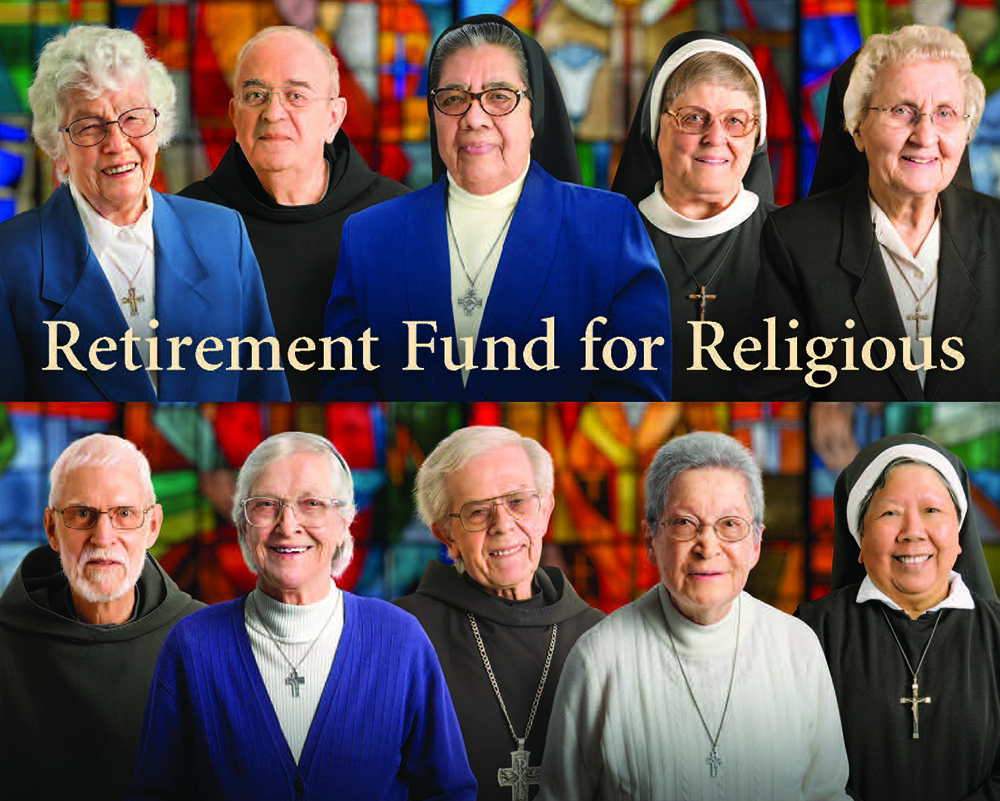
PROSPECT HEIGHTS — A Nov. 6 announcement from the U.S. bishops’ conference about next month’s national religious retirement collection came with a chilling warning that a very small percentage of religious communities actually have enough money to care properly for their elderly members.
The National Religious Retirement Office (NRRO), which runs the collection, reported that only 6% of religious communities that shared data with the office last year have sufficient retirement funding, and the financial strain they experience becomes more significant as average ages go up and health care costs increase.
“In many ways, the crisis is already here,” John Knutsen, the office’s director, told The Tablet.
“Many small communities, and almost half of those who report having 25 or fewer members, really struggle to care for their elder members due to a lack of financial resources and personnel,” Knutsen explained.
“It’s an ongoing problem, and we are doing everything we can from our perch to help them not only with immediate needs, but with planning for the future,” he said.
For added context, a recent Mercer Human Resources study that the office commissioned projected that by 2034, religious institutes will face a retirement deficit of about $9.8 billion.
The annual collection announced Nov. 6 will take place nationwide the weekend of Dec. 9-10.
Last year, the collection raised about $27.6 million, about $25 million of which was distributed across 297 religious communities — 204 women’s institutes, and 93 male communities. The money benefited more than 24,000 religious over the age of 70, according to the NRRO.
The vast majority of the money the office raises comes through the annual collection in December. The money is collected in December and distributed the following summer.
Religious communities are financially responsible, according to canon law, for the support and care of their own members, which has made maintaining sufficient retirement funds a challenge as the average age of the members of the community increases.
As the number of new religious declines, those who are 70 or older outnumber those who are younger than 70 by nearly three to one. NRRO data found that the average age of a woman religious in the U.S. is 74.85, and 67.64 for men, Knutsen said. He added that 55% of women religious, and 25% of male religious, are over 80 years old.
The impact of having less new religious is compounded by the fact that religious work most of their lives for a modest stipend, without any sort of 401(k) plan or pension.
“[Fewer people joining religious communities] means you have fewer and fewer members who are bringing in any kind of wages or stipends for the ministry they do,” Knutsen said.
“We always say that, in a sense, religious never retire, because even in their elderly years, they’re often still very active and still involved in ministries, and in many cases, they’re not receiving any income for that anymore, so it becomes harder and harder for those younger members of the community to support the health care needs of the elder ones without some additional assistance, and that’s where our collection comes in,” Knutsen said.
Another challenge for religious communities is the cost of health care. Knutsen said that the average cost of care in 2022 for religious over 70 was about $55,000 per person, and about $82,700 per person if you move up to skilled nursing care. He noted also that the annual Social Security benefit for a religious is a little more than $7,600 dollars, whereas the average annual Social Security benefit for a lay beneficiary is almost $22,000.
The U.S. bishops founded the Retirement Fund for Religious Collection in 1988 to address the funding need among U.S. religious orders. Since the collection’s inaugural year, it has distributed about $944.5 million to U.S. religious orders.
In addition to the collection, Knutsen said the NRRO tries to support and educate and assist religious institutes to care for their elderly members both now and in the future, through assessing their current retirement needs, implementation of planning for the future, and education on how to best allocate their assets.
In a statement announcing this year’s collection, he highlighted the kindness of U.S. Catholics.
“We are profoundly touched and blessed by the enduring generosity of the Catholic faithful. Their contributions to this fund are fundamental in aiding our elderly religious,” Knutsen said. “Through this national collection, we have the privilege to respond to the lifetime dedication of these individuals by ensuring their well-being in retirement.”
